Exhibition: The Storting and democracy
Due to the coronavirus pandemic, the Storting has had to cancel all guided tours and school visits. Until we can open our doors to the public once again, we have made a display about the Storting and democracy outside the Parliament building.
Our aim is to give you a brief insight into what happens inside the building. We hope you enjoy it!
The Storting and Democracy
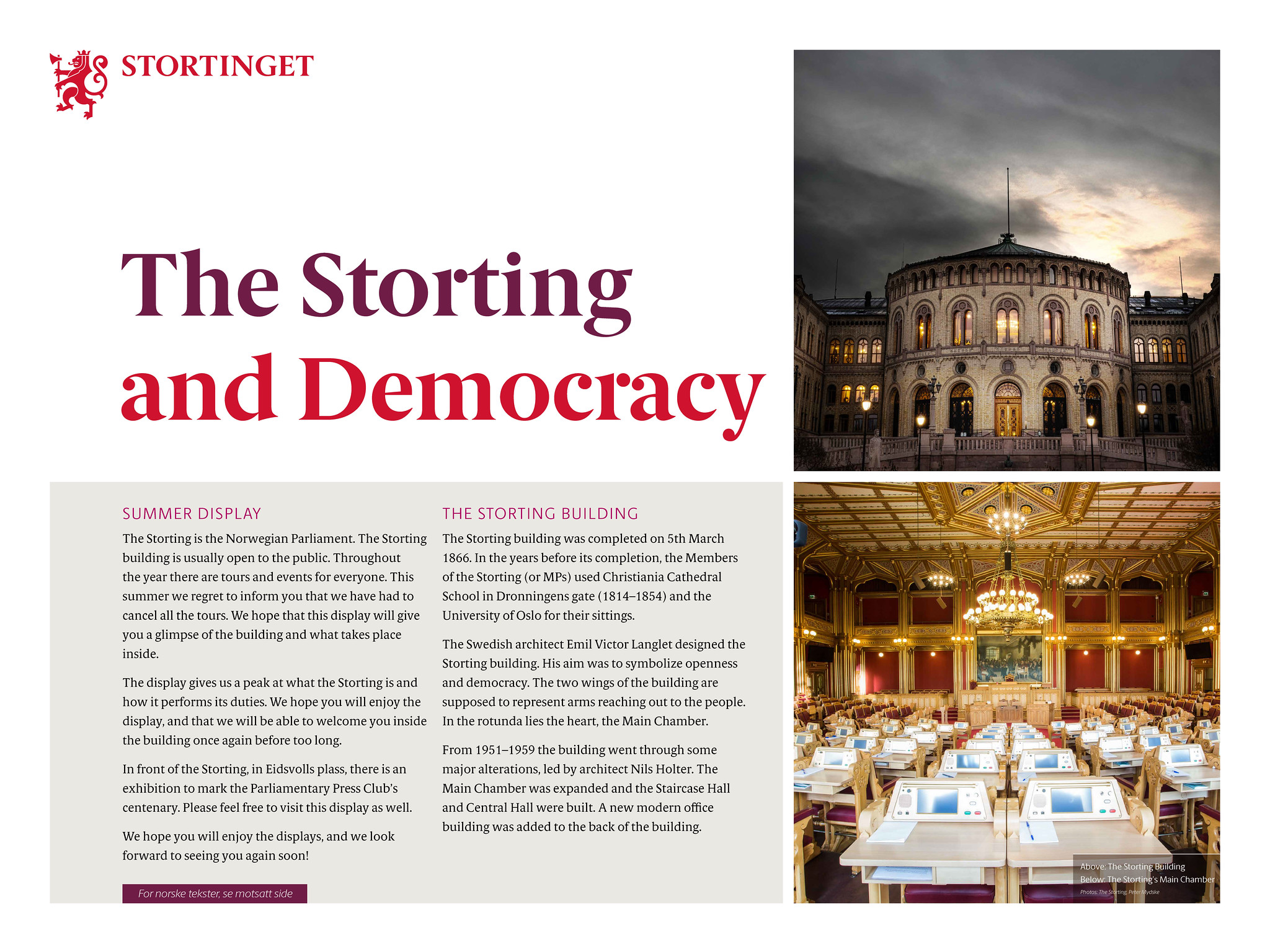
The Storting building was completed on 5th March 1866. In the years before its completion, the Members of the Storting (or MPs) used Christiania Cathedral School in Dronningens gate (1814-1854) and the University of Oslo for their sittings.
The Swedish architect Emil Victor Langlet designed the Storting building. His aim was to symbolize openness and democracy. The two wings of the building are supposed to represent arms reaching out to the people. In the rotunda lies the heart, the Main Chamber.
From 1951-1959 the building went through some major alterations, led by architect Nils Holter. The Main Chamber was expanded and the Staircase Hall and Central Hall were built. A new modern office building was added to the back of the building.
The Constitution

The Constitution sets out the basic principles of how Norway should be governed; the fundamental rights and obligations of the nation and its citizens. It includes the rules on the form of government and the most important branches of the state. Sovereignty of the people is an essential principle.
The Constitution was written at Eidsvoll in the spring of 1814. It has been amended regularly over the past 200 years, but is one of the oldest constitutions still in use.
Only the Storting has the power to change the Constitution. A proposal to amend the Constitution must be submitted to the Storting during one of the first three years of a four-year parliamentary term. Such proposals cannot be considered by the Storting until the following parliamentary term. This system gives voters the opportunity to have their say through the election of a new Parliament. Each proposal is considered by the Storting in a sitting in which at least two-thirds of the MPs must be present. Of these, at least two-thirds must vote in favour of the proposal in order for it to be adopted.
Parliamentary elections
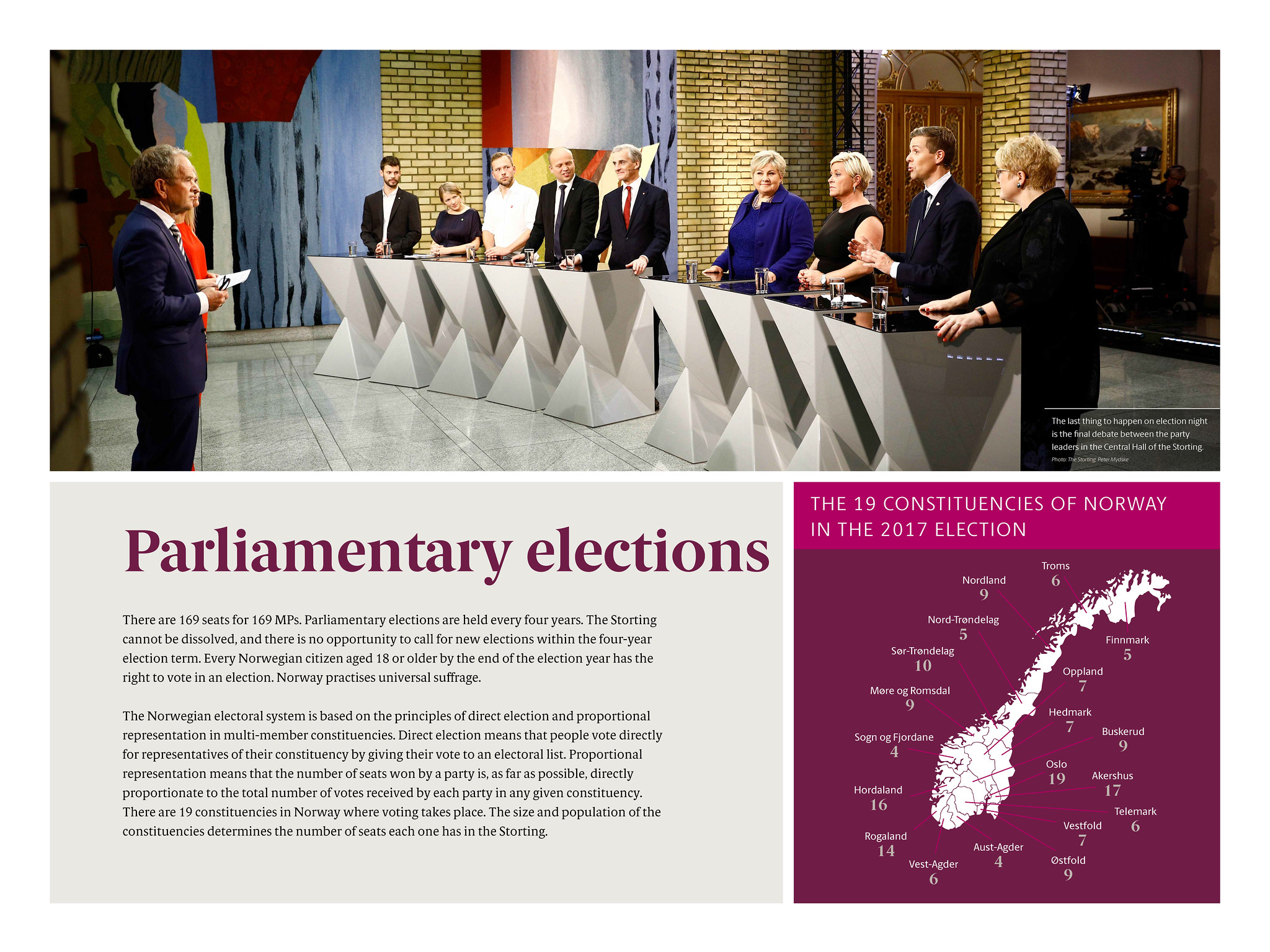
There are 169 seats for 169 MPs. Parliamentary elections are held every four years. The Storting cannot be dissolved, and there is no opportunity to call for new elections within the four-year election term. Every Norwegian citizen aged 18 or older by the end of the election year has the right to vote in an election.
The Norwegian electoral system is based on the principles of direct election and proportional representation in multi-member constituencies. Direct election means that people vote directly for representatives of their constituency by giving their vote to an electoral list. Proportional representation means that the number of seats won by a party is, as far as possible, directly proportionate to the total number of votes received by each party in any given constituency. There are 19 constituencies in Norway where voting takes place. The size and population of the constituencies determines the number of seats each one has in the Storting.
The Storting in numbers
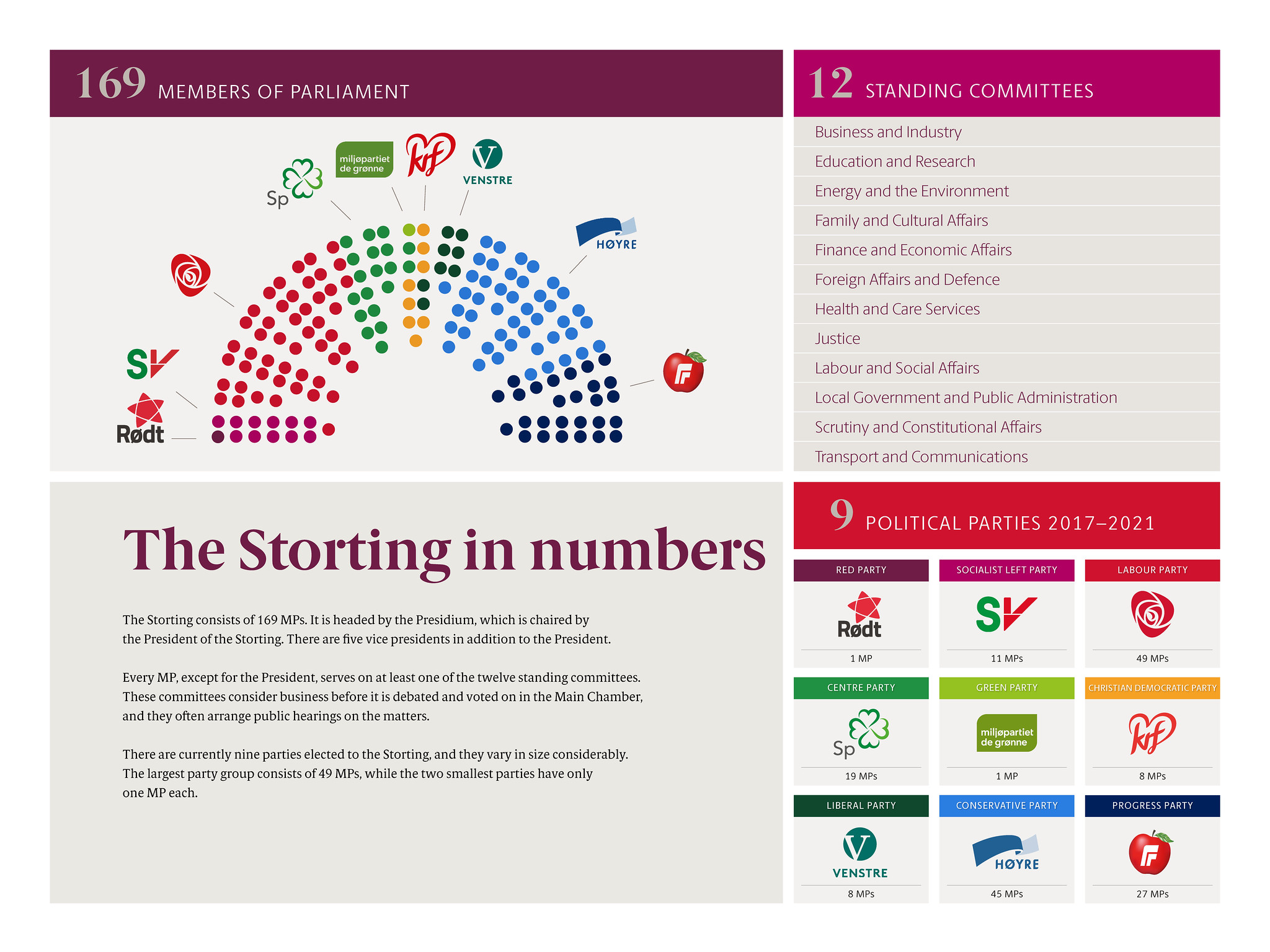
The Storting consists of 169 MPs. It is headed by the Presidium, which is chaired by the President of the Storting. There are five vice presidents in addition to the President.
Every MP, except for the President, serves on at least one of the twelve standing committees. These committees consider business before it is debated and voted on in the Main Chamber, and they often arrange public hearings on the matters.
There are currently nine parties elected to the Storting, and their size vary greatly. The two smallest parties have only one MP each, while the largest has 49 MPs.
The State Opening of the Storting
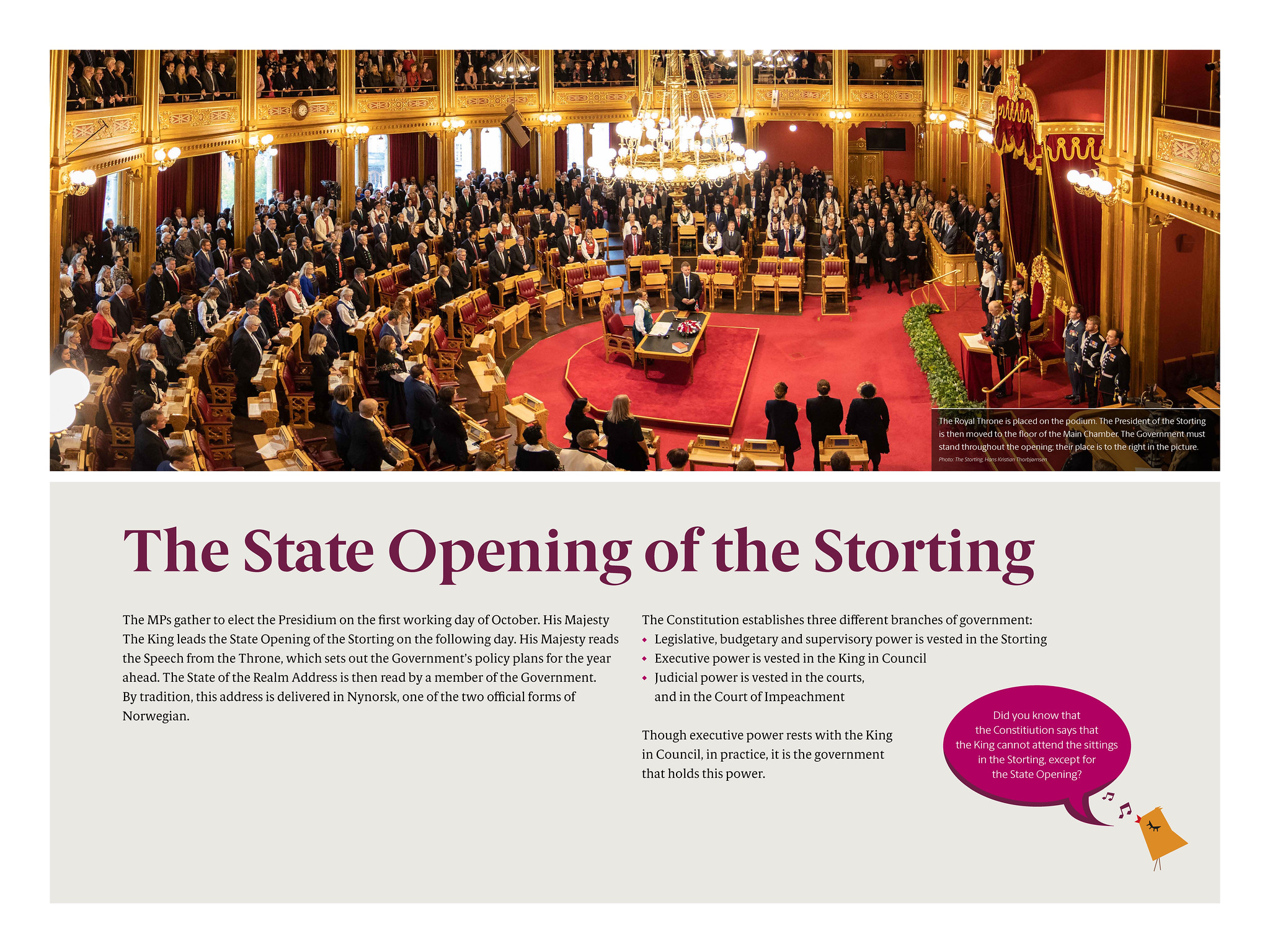
The MPs gather to elect the Presidium on the first working day of October. His Majesty The King leads the State Opening of the Storting on the following day. His Majesty reads the Speech from the Throne, which sets out the Government’s policy plans for the year ahead. The State of the Realm Address is then read by a member of the Government, usually the youngest minister.
The Constitution establishes three different branches of government: Legislative, budgetary and supervisory power is vested in the Storting; Executive power is vested in the King in Council; Judicial power is vested in the courts, and in the Court of Impeachment. Though executive power rests with the King in Council, in practice, it is the government that holds this power.
The Storting and the Government
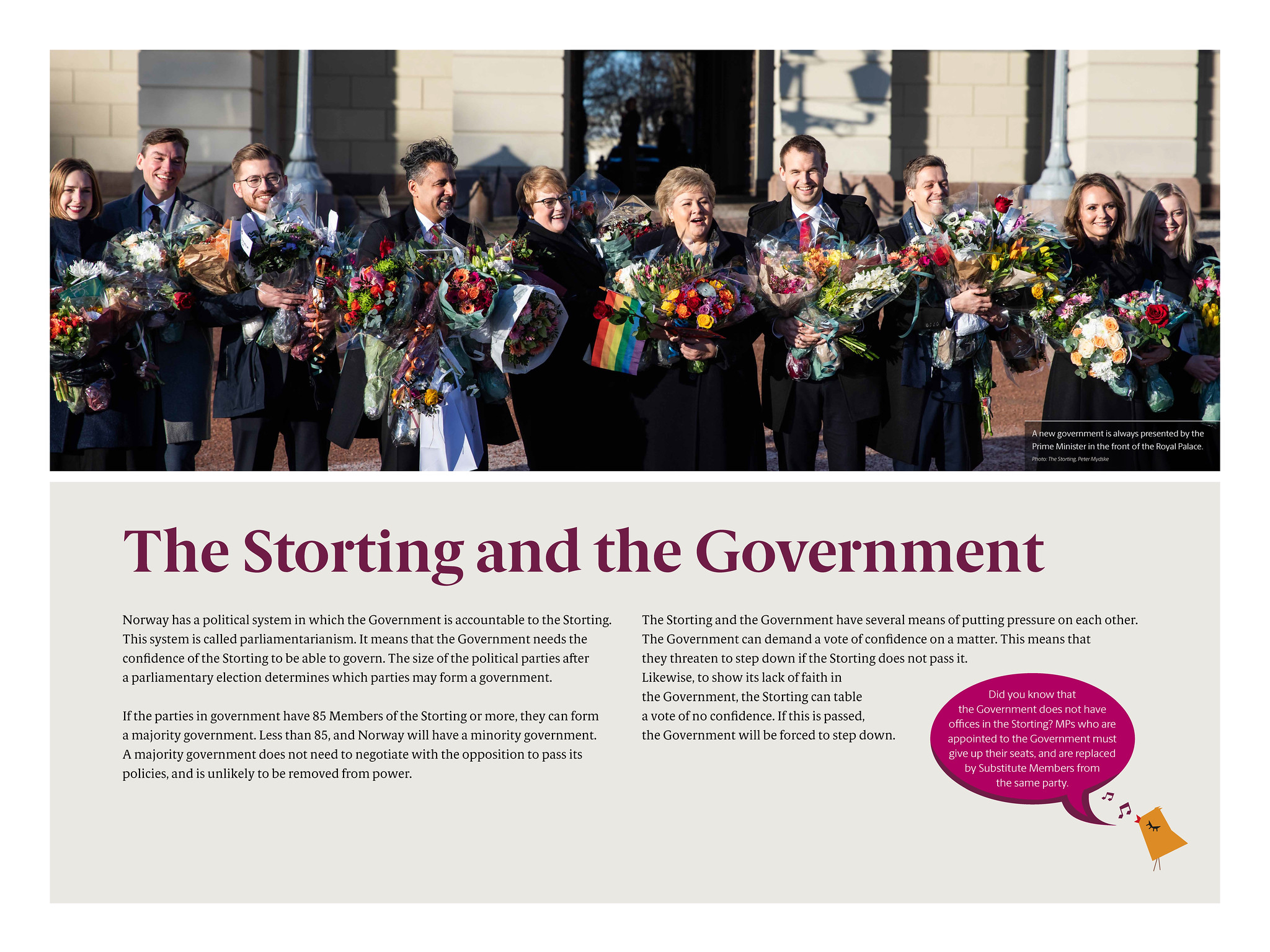
In Norway, we have a political system in which the Government is accountable to the Storting. This system is called parliamentarianism. It means that the Government needs the confidence of the Storting to be able to govern. The size of the political parties after a parliamentary election determines which parties may form a government.
If the parties in government have 85 Members of the Storting or more, they can form a majority government. Less than 85, and Norway will have a minority government.
The Storting and Government have several means of putting pressure on each other. The Government can demand a vote of confidence on a matter. This means that they threaten to step down if the Storting does not pass it. Likewise, to show its lack of faith in the Government, the Storting can table a vote of no confidence. If this is passed, the Government will be forced to step down
Legislation

One of the Storting’s main duties is to adopt, amend and repeal laws. Most bills are submitted to the Storting by the Government. Private Members’ Bills are drafted by the MPs themselves.
All bills are debated and voted on in the Main Chamber. If the Storting passes a bill, it is submitted to the King in Council for Royal Assent. After this, it becomes an Act of Parliament and is ready to come into force.
The Fiscal Budget
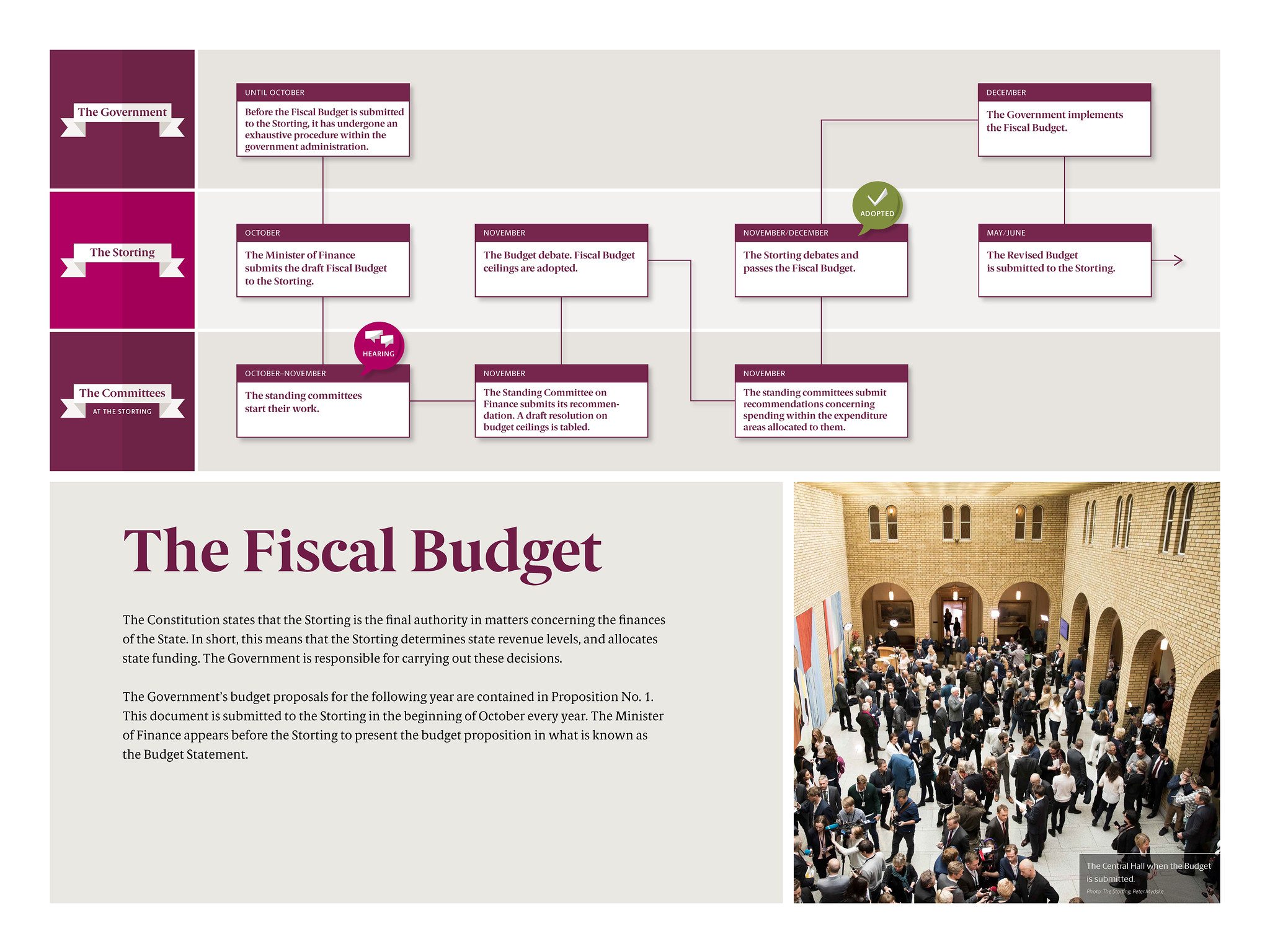
The Constitution states that the Storting is the final authority in matters concerning the finances of the State. In short, this means that the Storting determines state revenue levels, and allocates state funding. The Government is responsible for carrying out these decisions.
The Government’s budget proposals for the following year are contained in Proposition No. 1. This document is submitted to the Storting every October, by the sixth day of the session. The Minister of Finance appears before the Storting to present the budget proposition in what is known as the Budget Statement.
Supervisory role
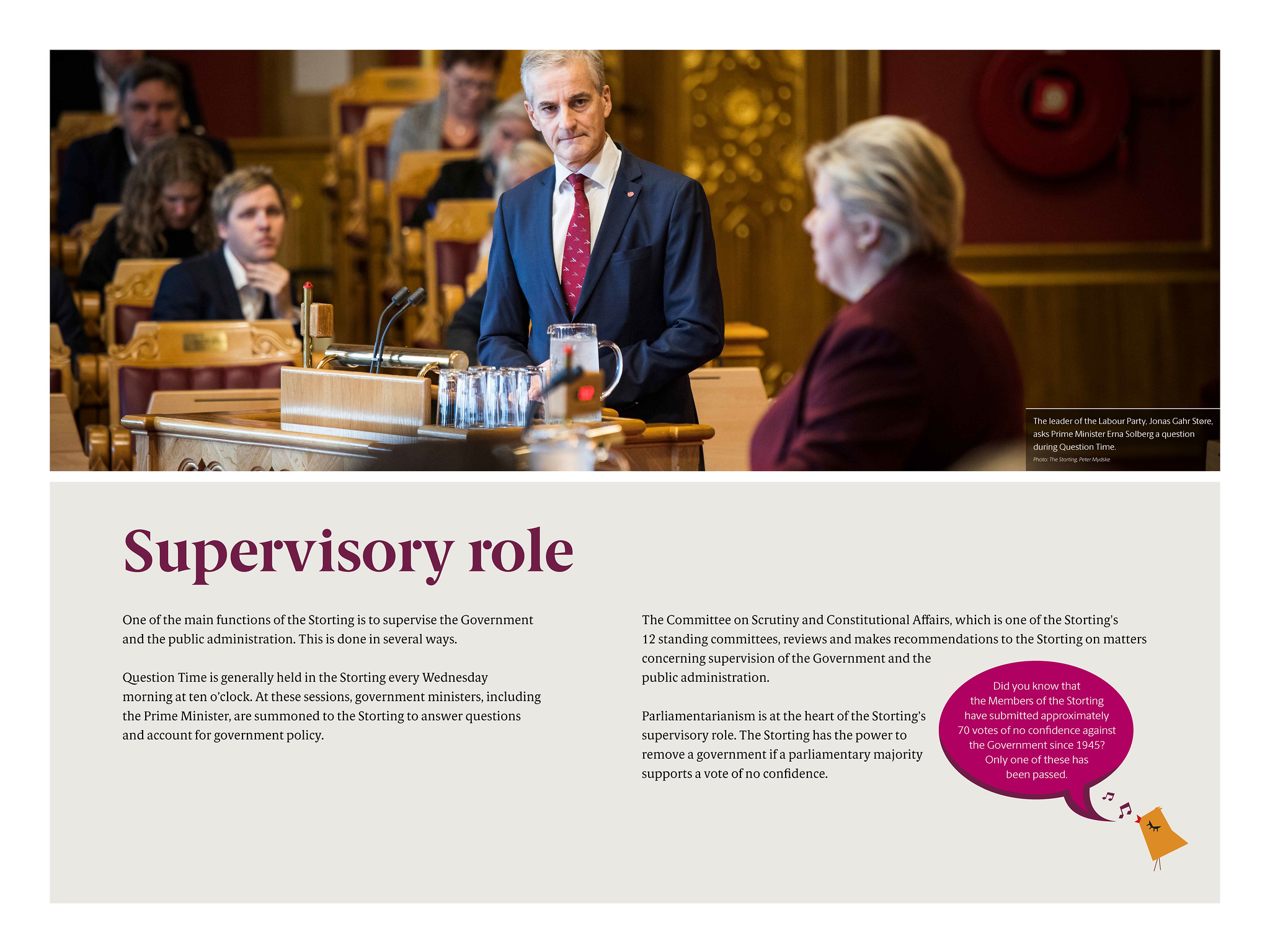
One of the main functions of the Storting is to supervise the Government and the public administration. This is done in several ways.
Question Time is generally held in the Storting every Wednesday morning at ten o’clock. At these sessions, government ministers, are summoned to the Storting to answer questions and account for government policy.
The Committee on Scrutiny and Constitutional Affairs, which is one of the Storting's 12 standing committees, reviews and makes recommendations to the Storting on matters concerning supervision of the Government and the public administration.
Parliamentarianism is at the heart of the Storting’s supervisory role. The Storting has the power to remove a government if a parliamentary majority supports a vote of no confidence.
The people and the MPs
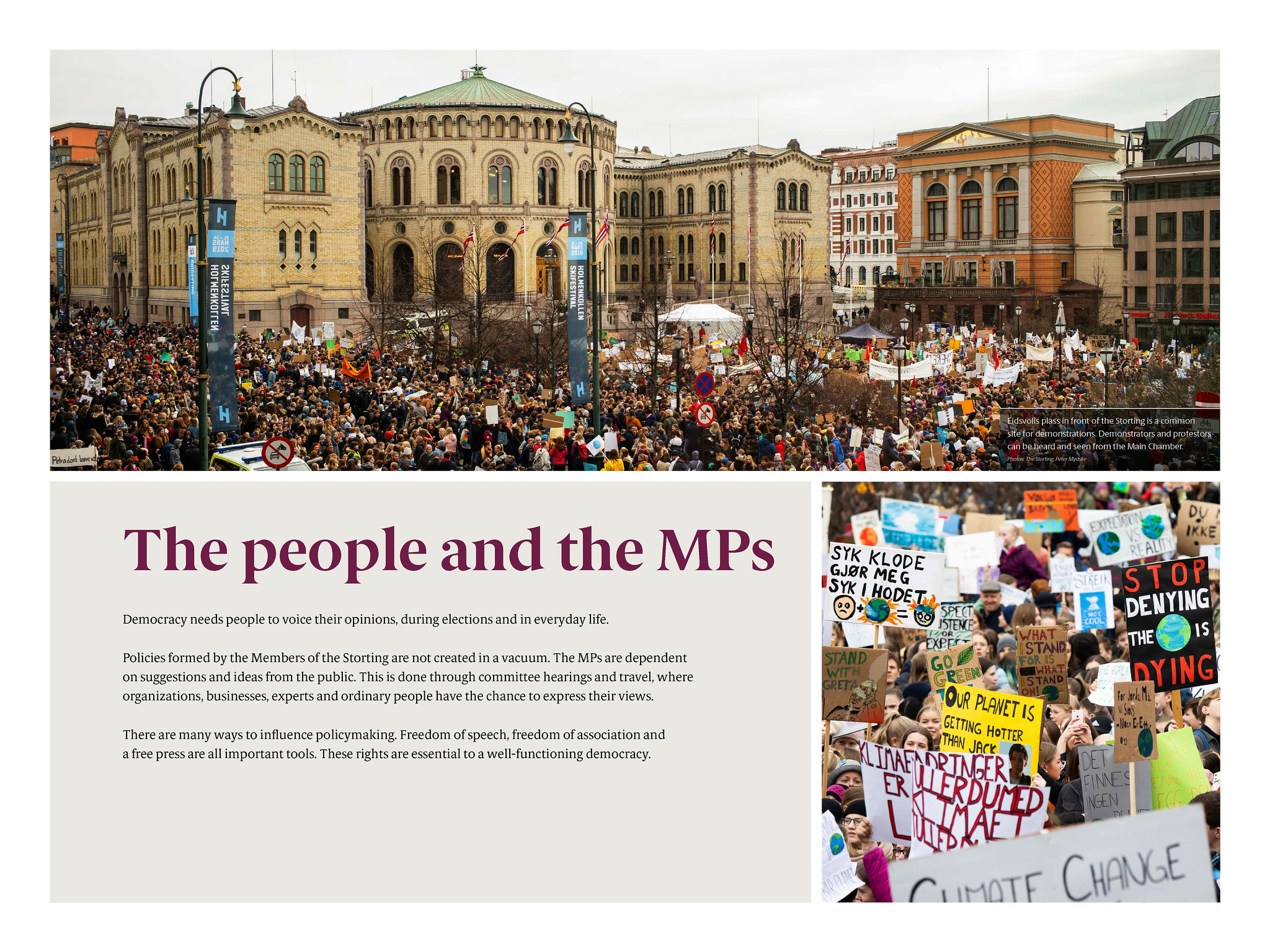
Democracy needs people to voice their opinions, during elections and in everyday life.
Policies formed by the Members of the Storting are not created in a vacuum. The MPs are dependent on suggestions and ideas from the public. This is done through committee hearings and travel, where organizations, businesses, experts and ordinary people have the chance to express their views.
There are many ways to influence policymaking. Freedom of speech, freedom of association and a free press are all important tools. These rights are essential to a well-functioning democracy.
Last updated: 04.04.2022 15:14